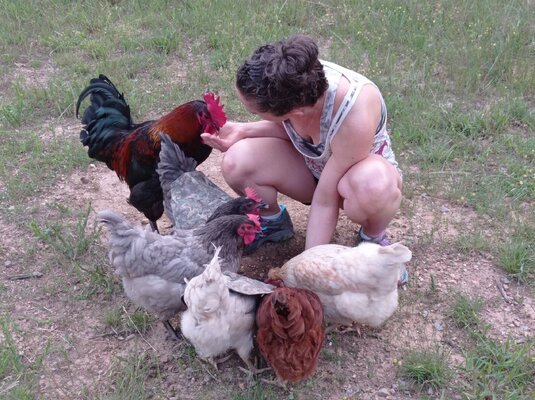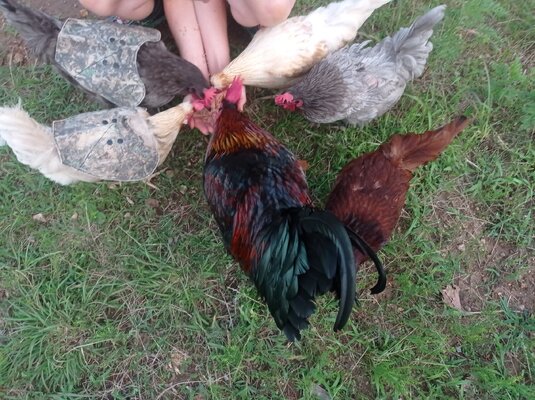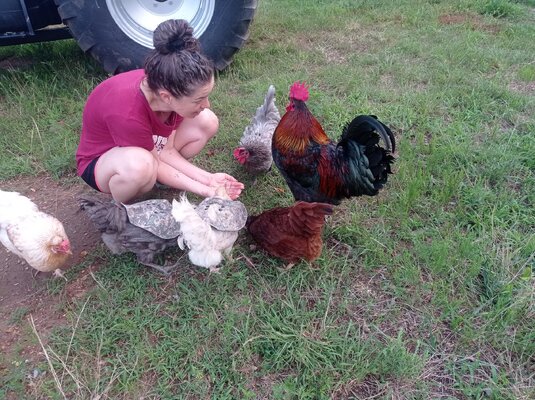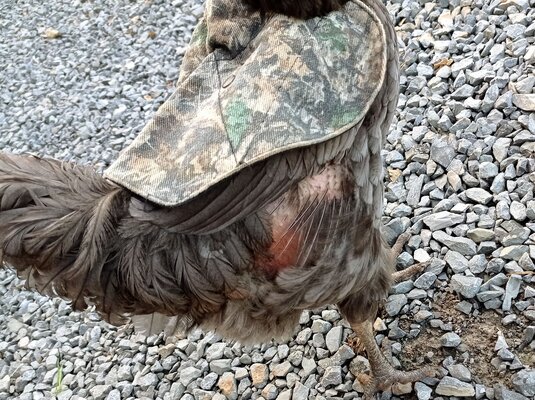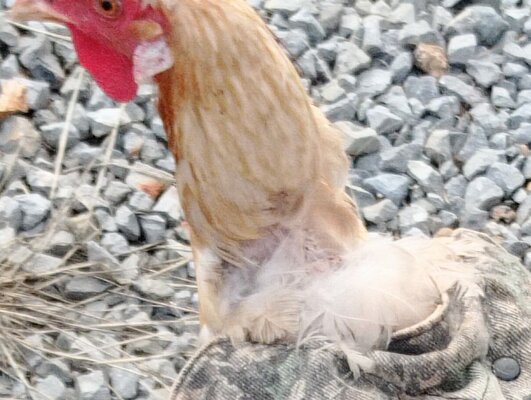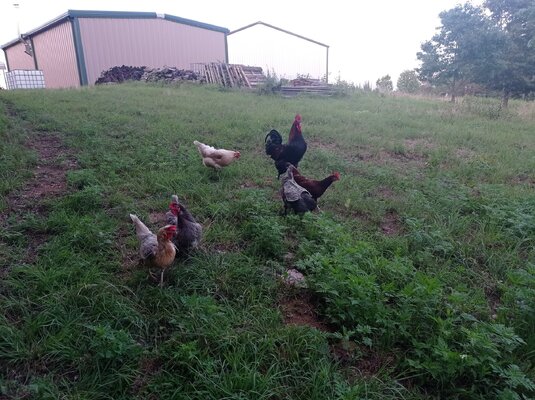Melancholy Bear
Chirping
We have a rooster mating with five hens. He is much larger than them. His spurs have caused feather damage to the backs of a couple of his favorite hens, to the point where we bought chicken saddles for them. After even more time, he has caused the removal of feathers around the sides and backs of four of the five visible mostly when they raise their wings. You basically see a wide ring of pink skin from one side to the other when they lift their wings. The missing inner feathers are even on the ones wearing the chicken saddles. He is a decent and friendly rooster. But I don't know if this is a problem or if anything needs to be done with him. I am not fond of the idea of removing the hard shell from his spurs.
Is this harming the hens or causing them suffering? Or is it nature taking it's course? Should we dispatch our rooster and let the hens live in peace? Or do they like having a rooster and would they miss him being around? Will this make them cold and get frostbite next winter without their down feathers?
Is this harming the hens or causing them suffering? Or is it nature taking it's course? Should we dispatch our rooster and let the hens live in peace? Or do they like having a rooster and would they miss him being around? Will this make them cold and get frostbite next winter without their down feathers?




